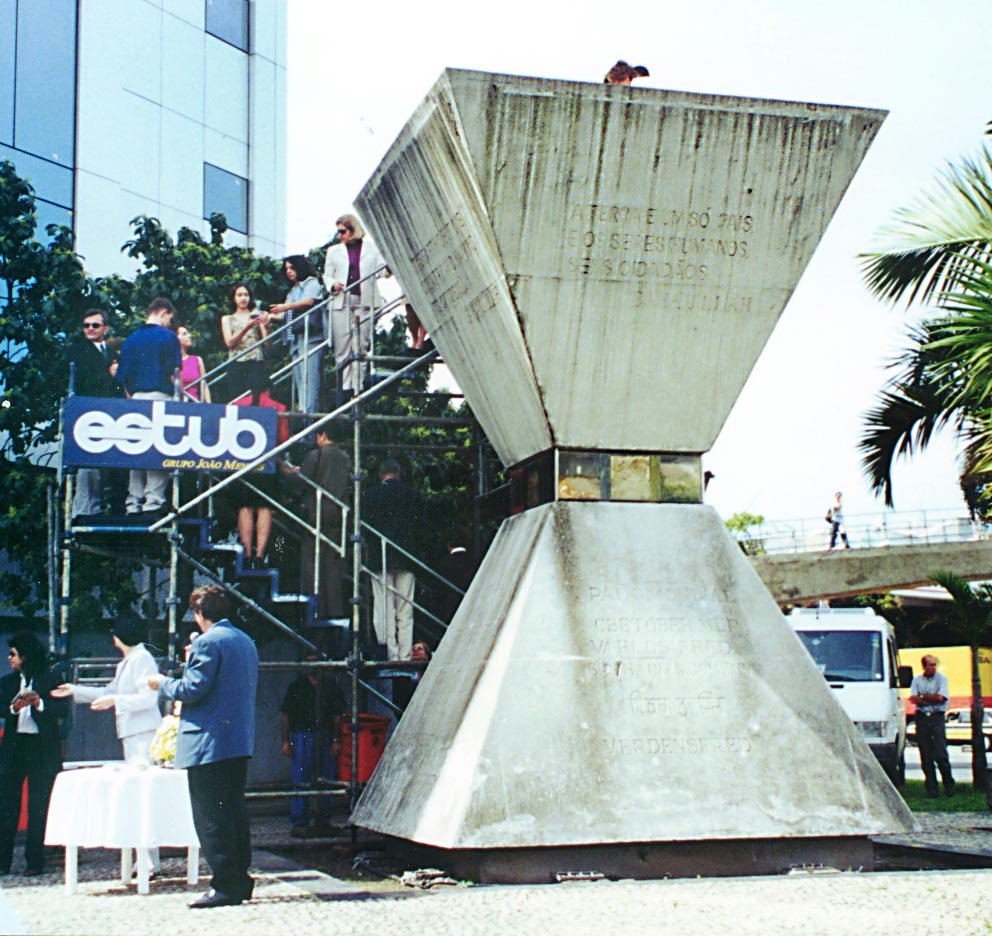
RIO DE JANEIRO — Nearly a decade after being inaugurated, an hourglass-shaped monument in Rio de Janeiro now contains soil samples from nearly 150 countries, a symbolic representation of the oneness of humanity and the global cooperation needed to achieve lasting peace.
In a ceremony on 19 September 2000, the final earth samples from 26 nations were deposited in the Peace Monument, which was built by the Baha’i International Community and the Baha’i Community of Brazil in 1992 for the 1992 Earth Summit.
"Peace is the paramount need of humanity today," said Bani Dugal-Gujral, a Baha’i International Community representative to the United Nations, who was the keynote speaker at the ceremony. "The soils that have been contributed by some 150 nations are at the heart of the monument. Each of these soils came with a testimony for peace."
Also in attendance were representatives of the United Nations Educational, Scientific, and Cultural Organizations (UNESCO), several diplomatic missions in Brazil, local authorities, members of several Brazilian NGOs, as well as representatives of the Baha’i Community of Brazil.
To deposit the final 26 soils, a human chain was formed and each of the samples of soil was passed from hand to hand to the top of the monument, where a street child, who happened to be passing by at that moment, placed it in the monument. The street child was the only youth present, and he brought a very special symbolic effect to the ceremony.

Designed by the renowned Brazilian sculptor Siron Franco, the five-meter concrete and ceramic monument is located near the entrance to the Santos Dumont Airport in Rio de Janeiro, just north of Flamengo Park and the site of the 1992 Global Forum, the parallel conference of non-governmental organizations held during the 1992 Earth Summit, which was formally known as the United Nations Conference on Environment and Development.
The monument is composed of two pyramids, one inverted on top of the other, creating an hourglass shape that serves as a reminder that time is running out for humanity to unite in a spirit of global cooperation. Etched in four languages on the four sides of the upper pyramid is a quote from Baha’u’llah, who wrote more than a century ago: "The earth is but one country and mankind its citizens." The quote is displayed in English, Portuguese, Chinese and Terena, an indigenous language of Brazil.
The soil of 42 nations was deposited in the monument at its inauguration on 14 June 1992, held as one of the closing ceremonies of the Earth Summit and Global Forum. The Baha’i International Community had requested the soil samples from the government delegations attending the Earth Summit, and many of the samples were taken from sacred or historic sites.
Soil from Iceland, for example, was taken from the site of Iceland's first parliament, considered the country's most sacred and historic spot. In the years since then, Baha’is have continued to solicit soil samples from other nations and have held several ceremonies to deposit the samples in the monument.
Ms. Dugal-Gujral said the monument serves as an enduring symbol of the spirit of global understanding and world citizenship that is characterized by the Earth Summit and the Global Forum.
"The Earth Summit fundamentally changed the world's understanding of and approach to social and economic development, linking it inextricably with environmental presentation," said Ms. Dugal-Gujral. "The monument's symmetry indicates that sustainable development requires a balanced approach to the challenges of conservation and development. This symmetry also suggests that men and women must, as equals and in partnership, work to bring about peace, justice and sustainable development."